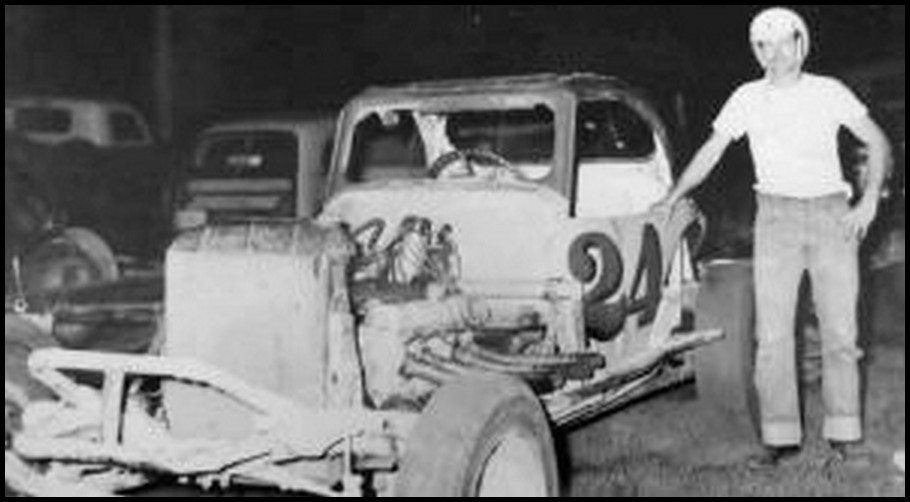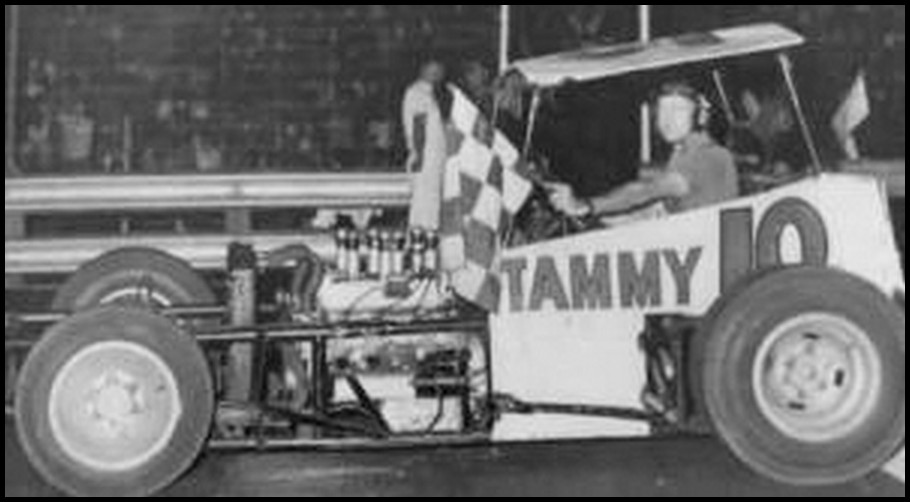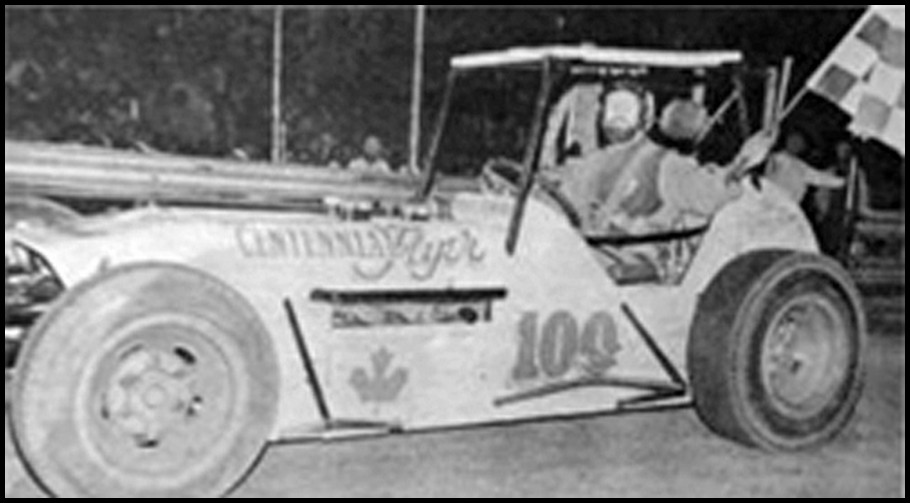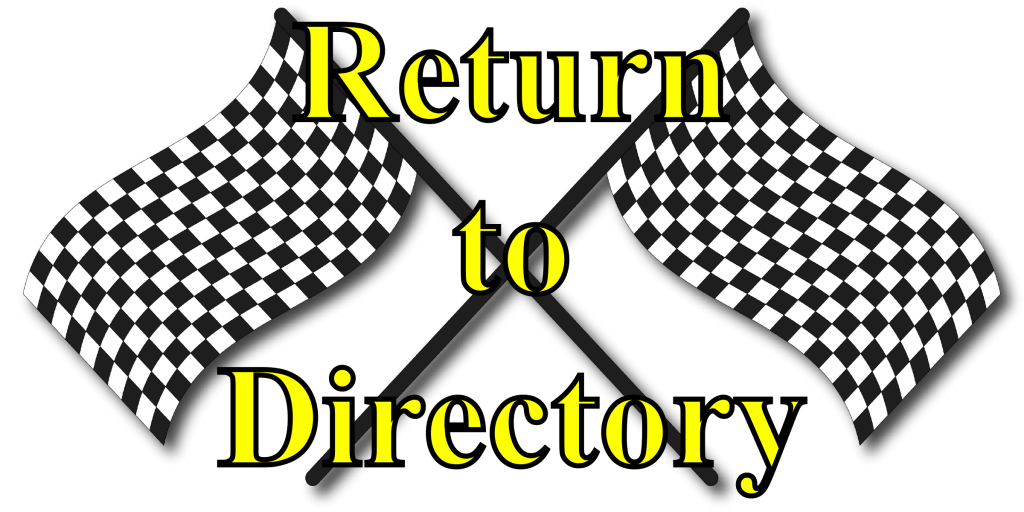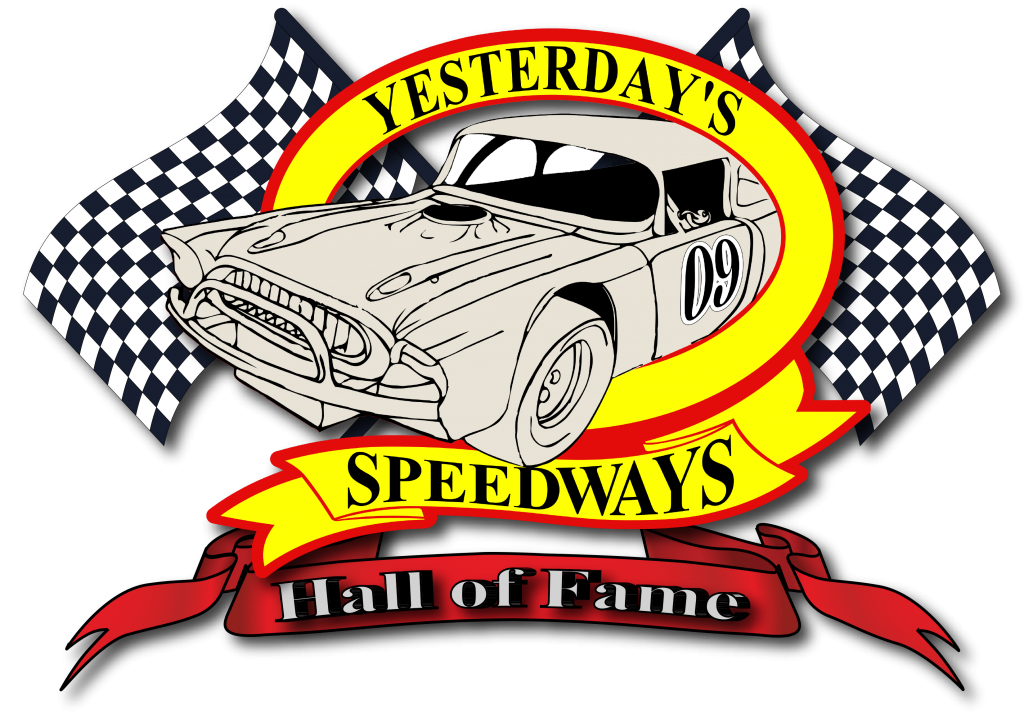
Harvey Lennox
Born October 31, 1929 Lanigan Saskatchewan
Passed Away September 29, 2014 London Ontario
Wife
Donna Lennox (nee Stafford) 1929 – 2002
Children
Rob (Lesley), Rick (Libby) and Susan (George)
Grandchildren (8)
Harvey started racing when he teamed with Hank Jamison in the early 1950s.
He was a consistent winner in the “24” at the numerous dirt tracks that had popped up in many South Western Ontario fairgrounds and farmers’ fields. At the end of the 1959 season he decided to hang up his helmet and take up golf as a new hobby. After throwing his back out each of the 3 times he golfed he thought maybe racing was safer.
Part way through the 1960 season an opportunity came up to drive the Jerry Kernohan owned “Tammy 10”. Harvey jumped at the chance and the rest, as they say, is history. Under the guidance of John McIntyre, Charlie Harrison and later Joe Suhr and Jim Watson, Tammy 10 became the car to beat. Harvey racked up wins and Championships at many of the now paved tracks including: Nilestown, Delaware, Bridgeport, CNE Stadium, and Flamboro. He was especially proud of feature wins not only at the local tracks, but at the Grand Rapids Michigan Speedrome Canadian Invitational and Harewood Acres, where they created a 1 mile oval using portions of the road course.
From 1960 to 1966 he won over 100 features including a couple of 25+ win seasons. Tammy 10 was so popular that Sunworthy Wallpaper actually printed wall paper with 2 super modifieds on it. The one in the background was the # 85 of Gordon Johncock, the top American driver at the time, who went on to win the Indy 500 twice. The car in the foreground was “Tammy 10” in full color including Harvey’s gold engine, red golf shirt and green helmet. Many a young race fan bragged about having “Tammy 10 wallpaper” in their bedroom! Although he had a great many fans there seemed to be just as many who thought he won too often and would boo when he picked up the checkered flag after a win. He became such a regular winner that some spectators actually formed an “Anybody but Lennox” fan club and would parade a banner back and forth at the top of the hill.
After being hit with a rock while picking up the checkered flag one evening he decided to skip the traditional victory lap. The next time he won a feature he headed straight to the pits which infuriated the “Anybody but Lennox” crowd. The promoters saw an opportunity to stir things up and offered Harvey an extra $25 if he would continue to skip the victory lap. With features only paying $100 to $150 Harvey decided that playing the villain was worth the extra $25 so he played along with the game. He even threw out a comment about “going home with a part of their dollar every night” just to wind the fans up even more. After a short period of playing the “bad guy” he gave up the villain game and the true mild mannered Harvey came back out.
In 1966 Nilestown, Delaware and Flamboro got together to create a point fund between the 3 tracks. The winner would receive the pace car, a 1966 Ford Falcon, generously supplied by Bill Daniels’ Motors. Harvey won the Championship at 2 of the 3 tracks and placed 2nd at the third in order to claim the overall Championship. At the end of the season Harvey would again give up the sport. One would think there would be lots of interest in purchasing the Championship winning car but no one seemed to show any interest.
Early in the 1967 season Harvey had a conversation with Reg Mitchell, the former owner of Lobo 1. Reg had given up racing when his driver (Jack Sharpe) had been seriously injured at Delaware Speedway. Harvey and Reg worked out a partnership where Harvey would buy the “Tammy 10” from Jerry Kernohan and Reg would supply a new Chev 4×4 engine to replace the old “nail head” Buick that had become less competitive. The partnership only lasted one year but it was a productive one as the newly formed team was competitive right out of the box. They capped the year off by putting the #100 “Centennial Flyer” in victory lane at the Flamboro 150 lap International, the biggest payday of Harvey’s career. At the end of the year Harvey kept his car, Reg kept his engine and they both kept their friendship. It was definitely a win/win season.
Once again Harvey decided to quit the racing game. This should have been the end of the story but for a man named Pat Hodgson. Pat was the owner of London Concrete Machinery, a company that built ready mix concrete trucks. He was also a huge race fan who had previously sponsored a few cars. Late in the 1969 season, Pat approached Harvey about putting the old Tammy 10/Centennial Flyer back on the track. After much discussion they decided that putting a new engine in the old style “upright” car was not the way to go. The “Roadster Revolution” was now well under way so instead they looked at purchasing a newer, more competitive car.
At that time Jack Greedy was handling the management duties at Delaware as well as driving. He found that doing both was not feasible so he decided to focus on the management end and sell the 01. They agreed to a unique deal that would see Jack finish the year at Oswego (he was fighting for the track Championship) and Harvey would drive the car at Delaware. What seemed like a great partnership came to a violent end at Oswego less than 24 hours later. Jack would tangle with Bentley Warren (in the famous “little deuce”) and hammer the third turn wall, literally breaking the 01 in half. Jack’s crew worked day and night to repair the car so that Harvey could compete in the 150 lap race at Delaware the following week. Harvey won his qualifying heat and ran in the top 3 all night before cashing in on a well-earned second place finish.
With the support of Tony Sammut and Herb Rodgers, Harvey would pilot the “Concrete car” to more victories over the next 3 seasons and extend his total to a remarkable 182 feature wins. He also added the 1971 Delaware track Championship along the way. Finally, in 1972 Harvey put his famous green helmet away for good. He tried to stay away from the racing game but in 1974 his son Rick purchased a late model to run at Delaware. Of course, Harvey was the natural choice as crew chief. The team enjoyed success but decided to pack it in at the 1977 Mid-season Championship night, while running second in points.
No matter how hard he tried Harvey couldn’t stay completely away from the racing game. His close friendship with the Sammut family kept him around super modified racing even if it was reduced to being an avid fan rather than an active participant.
Harvey has been inducted into the Canadian Motorsport Hall of Fame, The City of London Sports Hall of Fame, the Flamboro Speedway Hall of Fame and now the Yesterday’s Speedway Hall of Fame.
Somehow during Harvey’s racing career he still found time for other interests. He was the proud owner of a number of antique cars, including a 1928 Model A Roadster pickup, a 1931 Model A coach and a 1940 Oldsmobile. He always liked the style of the 1957 T Bird so he finally bought a 2003 retro style T Bird. Harvey’s “need for speed” slowed somewhat as he spent a great deal of time on his Hobie Cat sailboat. He also enjoyed camping and built a number of recreational vehicles. He started with fabricating a camper for his pickup truck and then progressed to rebuilding a side swiped travel trailer. Next up was a former City of London fire rescue unit that had been written off in a crash. He finished up by converting a 38’ Blue Bird bus into a motor home. Harvey and Donna would enjoy many visits to Ipperwash in the summer and Florida, Arizona and California in the winter.
Family was always important to Harvey and Donna as their 3 children were permanent fixtures around the local race tracks. Throughout the years they all formed many great friendships with both the fans and other competitors. Harvey was always amazed at how people looked up to him and treated him “like royalty”. He would question why, as “I am just a regular guy”? One of Harvey’s last social outings was the Delaware ISMA race about a month before his passing. He was still amazed that people knew who he was 40 years after he had quit racing. Rob, Rick and their families had set up camp behind the speedway with a number of cousins and family friends. We all grew up with a friendly camp fire after the races and this night would be no exception. Harvey sat by the fire, a bowl of Libby’s chili in one hand and a cold one in the other, with a huge smile on his face. When his granddaughter Cassie was going to head home she asked Harvey if he was ready to go back to the nursing home. He asked “do I have to go?”. When told that he needed his nighttime medications he said “I would rather stay here and we will worry about the damn pills in the morning”, so he happily stayed at the track for one final night. Once a racer…always a racer!!
Thanks for all the great memories!! R.I.P. Harvey!!

